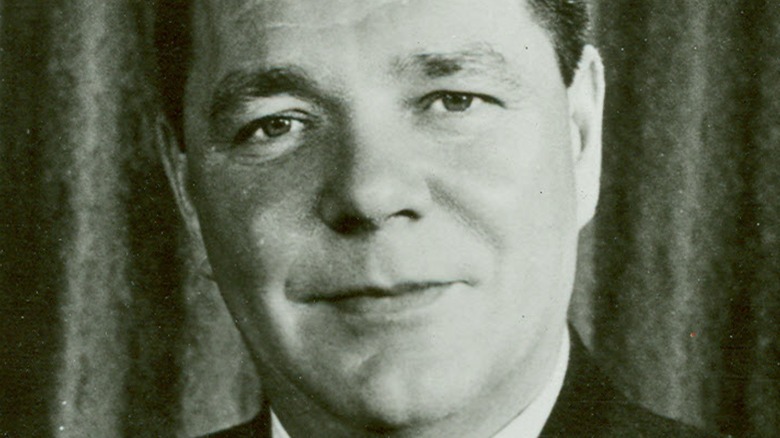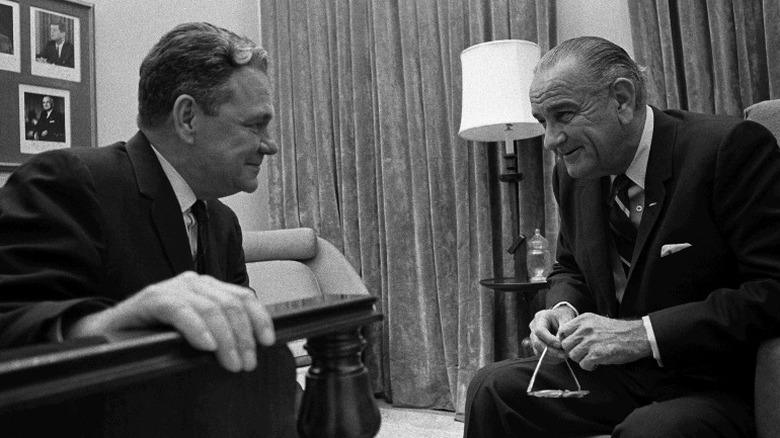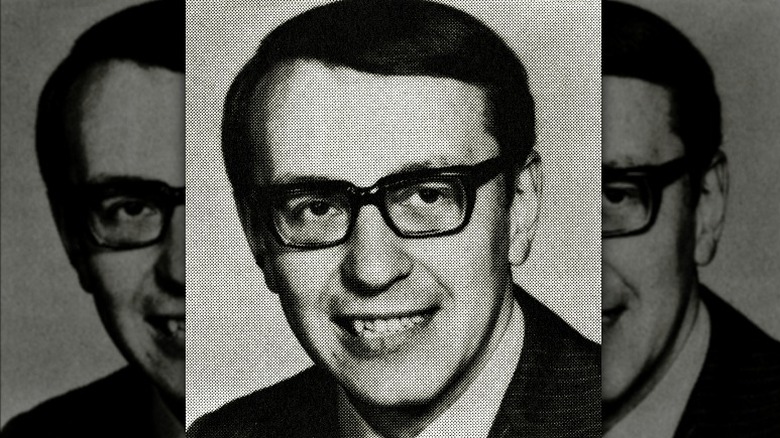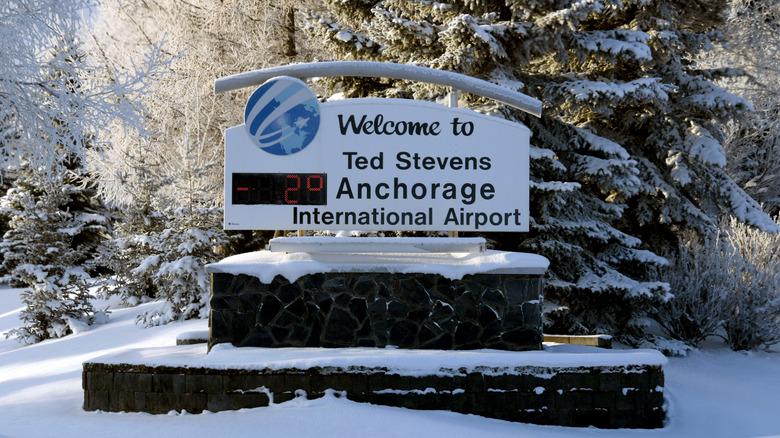Hale Boggs: The US Congressman Who Disappeared Into Thin Air
The weather between Anchorage and Juneau on October 16, 1972, was less than ideal for flying. But with house majority leader Hale Boggs in town to help freshman congressman Nick Begich retain his seat, they needed to go anyway. Their twin-engine Cessna 310 never arrived in Juneau.
The next day, word got back to Washington, D.C. that Boggs and Begich — along with Begich's aide Russell Brown and pilot Don Jonz — were nowhere to be found. According to Politico, Massachusetts representative Tip O'Neill told House members that the hope was that the men would be found alive in the Alaskan wilderness. What followed was the biggest search effort the United States had ever seen.
Tragically, even after 39 days of searching, nothing was ever found (via The Washington Post). The mysterious crash cut short four lives and two political careers. Seeing as no wreckage has ever been found, the cause of the crash has never been explained.
Hale Boggs' political career
According to Tulane University, Boggs served in Congress for two stints. The first was a single two-year term from 1941 to 1943, but he returned to the House of Representatives from 1947 until he died in 1972. Boggs was a bit of an outlier among southern Democrats of his era, as he was a strong proponent of abolishing racial segregation, and according to "Hale and Lindy Boggs: Louisiana's National Democrats" by Thomas H. Ferrel and Judith Haydel, Boggs' voting record was substantially more liberal than his fellow southern Democrats. As such, Boggs — and after, his wife Lindy, who took his seat in Congress — served as one of the few links between southern Democrats and the rest of the national party.
Another important moment of Boggs' political career came when he served on the Warren Commission. The Warren Commission was put together by President Lyndon B. Johnson and was tasked with investigating the assassination of President John F. Kennedy.
Nick Begich's political career
While Nick Begich was a freshman congressman when he disappeared in 1972, he wasn't a newcomer to politics in general. According to Alaska's News Source, Begich had a background in education and worked in schools as a teacher, guidance counselor, and superintendent, and also did some work as a college instructor. In 1962, Begich was elected to the Alaska Senate, something he accomplished by running on a platform centered on education.
In 1968, Begich took a stab at Alaska's only seat in the House of Representatives but lost to incumbent Howard Pollock. However, he ran again in 1970, and this time claimed the seat. In 1972, he was up for reelection and was in a tight battle with Republican challenger Don Young, per Politico. By this point in his career, Boggs was the house majority leader and a major figure in Democratic politics. So, he traveled to Alaska to help give Begich's campaign that little extra nudge it needed to ensure that the Democrats held on to the state's only seat in the House of Representatives.
The disappearance of Hale Boggs and Nick Begich
On the morning of October 16, 1972, Boggs, Begich, Begich's aide Russell Brown, and pilot Don Job arrived at Anchorage international Airport. They were there to hop aboard a chartered, twin-engine Cessna 310 that Jonz would pilot 550 miles to Juneau. According to The Washington Post, there had been a chance that Boggs' wife Lindy and Beginch's wife Pegge were going to join them on this trip to Alaska — and on this particular hop to Juneau — but they had opted to stay behind in Washington D.C.
It was raining and visibility was low when the plane raced down the runway and lifted into the air around 9 a.m. Twelve minutes after leaving the airport in Anchorage, Jonz made the aircraft's final contact with air traffic control. By then they were somewhere around the Portage Pass and heading toward the Chugach Mountains.
The search begins
Hours after the Cessna 310 left Anchorage, the phone rang in the Begich household. One of their kids answered the phone and handed it off to Pegge Begich. On the other end of the line was Alaska Governor Bill Egan. He had the unenviable task of letting Begich know that her husband and the rest of the passengers had never reached Juneau and were missing (via The Washington Post).
The search began as soon as the possible. According to Politco it was the largest search and rescue mission in United States history at the time. Both military and civilian aircraft crisscrossed the skies above the Alaskan wilderness in hopes of spotting the plane, and even more hopefully, survivors. However this search was like finding the proverbial needle in a haystack as the small plane was believed to have vanished somewhere — where exactly no one knows to this day — within a swath of land that was approximately 325,000 square miles. After 39 days the search was called off. Nothing had been found.
The Aftermath
According to Alaska's News Source, Nick Begich went on to posthumously win the race in 1972, but obviously, with him unable to serve, a special election was called, and that was won by Don Young (Young held that seat until his death in 2022, via Ballotpedia). Someone needed to represent Boggs' district in Louisiana, as he had also been posthumously reelected, and who better to do that then his widow, Lindy Boggs, who held the seat from the time of her husband's disappearance in 1972 until 1991. Their daughter, Cokie Roberts, was 28 years old at the time of her father's disappearance and was a mother of two working at a news station in California, per The Washington Post. She went on to become an Emmy-winning journalist and political commentator.
The deaths of Boggs, Begich, Brown, and Jonz led directly to Congress taking a step toward making planes easier to recover in the event that something like this were to ever happen again. According to Politico, the mandate stipulates that all civilian aircraft must be fitted with an emergency locator transmitter.





